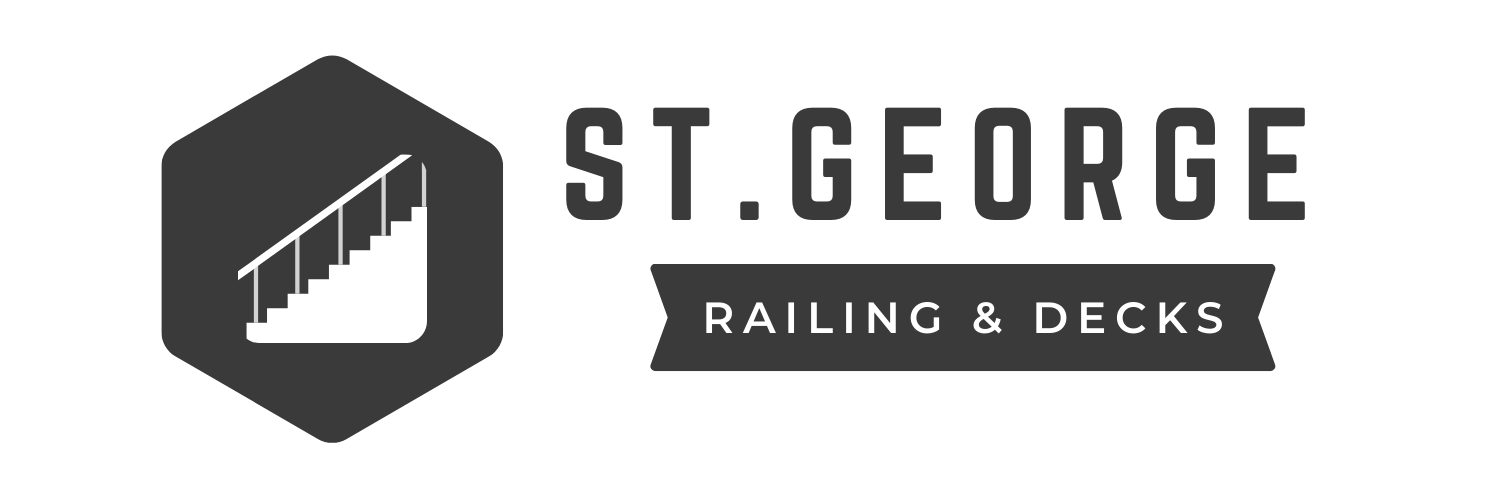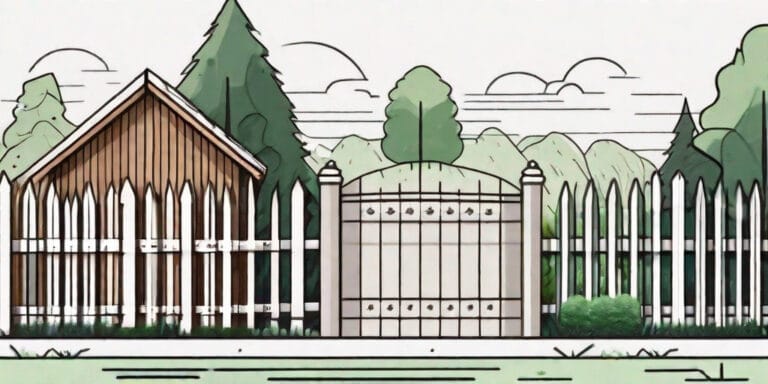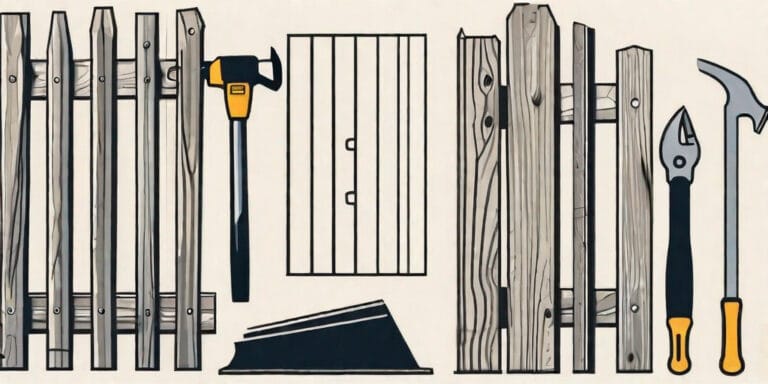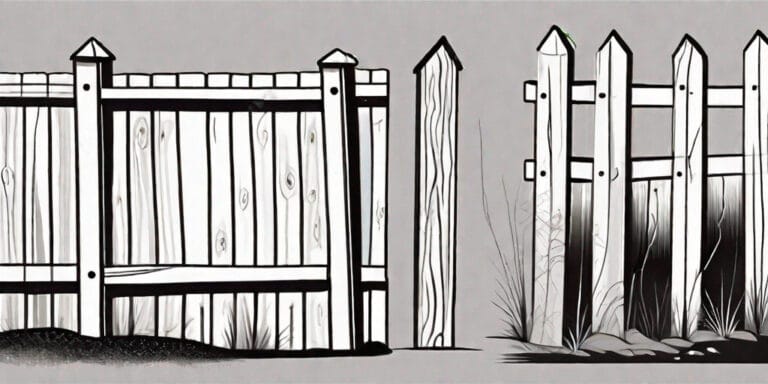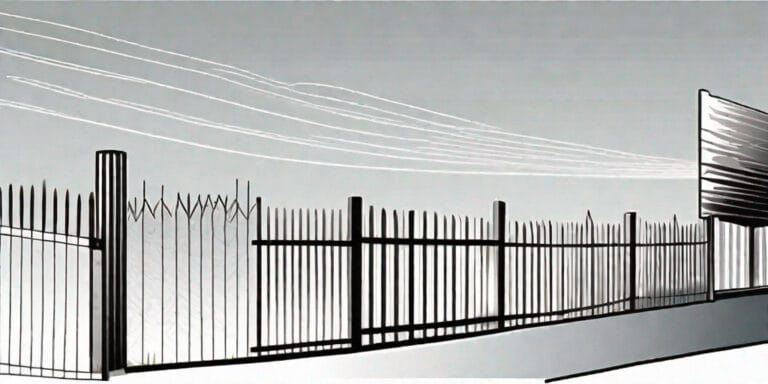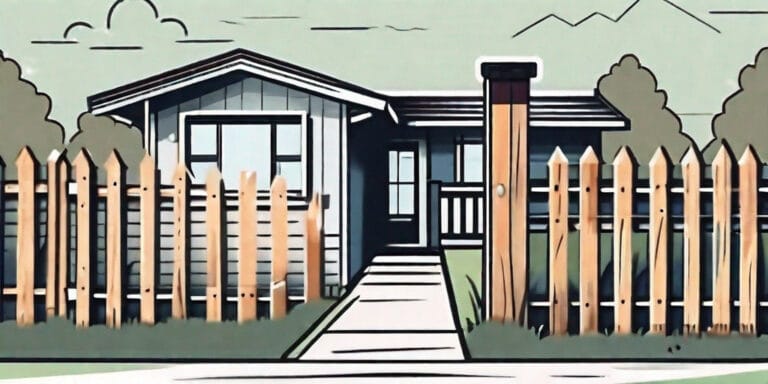What Is the Average Cost of Fence Installation?
If you’re considering installing a fence around your property, one of the first questions that comes to mind is, “What is the average cost of fence installation?” Understanding the fundamentals of fence installation and the factors that influence the cost can help you estimate your expenses accurately. In this article, we will break down the various aspects related to fence installation costs and provide you with valuable tips on how to estimate and save on your fence installation.
Understanding the Basics of Fence Installation
Before diving into the costs, it’s important to have a clear understanding of the basics of fence installation. This includes knowing about the different types of fences and the factors that can influence the overall cost.
Installing a fence around your property can provide numerous benefits, such as increased privacy, improved security, and enhanced curb appeal. However, it’s crucial to make informed decisions to ensure that you choose the right type of fence and understand the various factors that can impact the cost.
When it comes to fence installation, there are several key considerations to keep in mind. These include the type of fence you want, the materials used, the size and layout of your property, and any specific requirements or regulations in your area.
Types of Fences and Their Costs
There are numerous types of fences available in the market, each with its own advantages and price range. Some common types include wood, vinyl, chain-link, and wrought iron fences. Each type has its unique characteristics and aesthetic appeal.
Wood fences are a popular choice for their natural beauty and versatility. They can be customized to match your specific style preferences and can provide excellent privacy. The cost of wood fences can vary depending on the type of wood used, such as cedar or pine, and the level of craftsmanship involved.
Vinyl fences, on the other hand, are known for their durability and low maintenance. They are resistant to rot, decay, and pests, making them a long-lasting option. Vinyl fences come in various styles and colors, allowing you to find the perfect match for your property. The cost of vinyl fences can vary based on the quality of the materials and the complexity of the installation.
Chain-link fences are a cost-effective option that provides security and visibility. They are commonly used for residential, commercial, and industrial purposes. The cost of chain-link fences is generally lower compared to other types, making them a popular choice for those on a budget.
Wrought iron fences are known for their elegance and timeless appeal. They can add a touch of sophistication to any property. However, wrought iron fences tend to be more expensive due to the intricate designs and the labor-intensive installation process.
Factors Influencing the Cost of Fence Installation
Several factors can impact the overall cost of fence installation. It’s essential to consider these factors to get an accurate estimate of your fence installation cost.
The size of your property is a significant factor that can affect the cost. The larger the area you need to fence, the more materials and labor will be required, resulting in higher costs.
The type of fence you choose also plays a crucial role in determining the cost. As mentioned earlier, different types of fences have varying price ranges. Additionally, factors such as the height, design, and additional features like gates or decorative elements can influence the overall cost.
Labor costs can vary depending on your location and the complexity of the installation. It’s important to research and obtain quotes from reputable fence installation professionals to ensure you have a clear understanding of the labor costs involved.
Additional costs such as permits and tools should also be taken into account. Depending on your local regulations, you may need to obtain permits before installing a fence. Additionally, specialized tools or equipment may be required for certain types of fences or installation methods.
Lastly, unforeseen challenges can arise during the installation process, which may impact the cost. These challenges can include rocky terrain, underground utilities, or the need for additional structural support. It’s important to be prepared for such contingencies and budget accordingly.
By considering these factors and conducting thorough research, you can make informed decisions and ensure that your fence installation project is completed within your budget and meets your specific requirements.
Breaking Down the Cost of Fence Installation
When it comes to the cost of fence installation, it’s important to break it down into various components. This includes materials, labor, and additional costs.
Installing a fence can be a significant investment, but it offers numerous benefits such as privacy, security, and enhancing the overall aesthetics of your property. Understanding the breakdown of costs can help you make informed decisions and plan your budget accordingly.
Material Costs
The cost of materials can vary significantly depending on the type of fence you choose. For example, wood fences tend to be more affordable than wrought iron fences. However, it’s essential to consider both the upfront cost and the long-term maintenance requirements when selecting your materials.
Wood fences are a popular choice due to their natural beauty and versatility. They can be customized to fit any style or design preference. On the other hand, wrought iron fences offer a timeless and elegant look but may require more maintenance to prevent rust and corrosion.
Other material options include vinyl, aluminum, and chain-link fences. Vinyl fences are known for their durability and low maintenance, while aluminum fences offer a lightweight and rust-resistant alternative. Chain-link fences are often chosen for their affordability and functionality.
When considering material costs, it’s also important to factor in the quantity of materials needed based on the size of your property and the desired height and length of the fence. Additionally, you may want to consider the cost of any necessary treatments or finishes to protect the materials from weathering and damage over time.
Labor Costs
Labor costs are another significant component of fence installation expenses. While some homeowners may choose to install the fence themselves, hiring experienced professionals will often ensure a higher quality installation. However, this can come at a higher cost.
When hiring a contractor, it’s recommended to obtain multiple quotes from reputable professionals to compare prices and find the best balance between cost and quality. Look for contractors with a proven track record and positive customer reviews. Remember, a well-installed fence can last for many years, so investing in skilled labor can be a worthwhile investment.
The complexity of the installation can also impact labor costs. Factors such as the terrain of your property, the presence of any obstacles or slopes, and the need for excavation or removal of existing structures can all affect the overall labor expenses.
Additional Costs: Permits, Tools, and More
In addition to material and labor costs, there are various other expenses to consider when installing a fence.
One important consideration is obtaining the necessary permits required by your local municipality. Depending on your location, you may need to obtain permits for fence installation to ensure compliance with local building codes and regulations. The cost of these permits can vary, so it’s essential to research the requirements specific to your area.
Tools needed for the installation are another factor to consider. While some homeowners may already have basic tools, specialized equipment such as post hole diggers, power saws, and levels may be necessary for a professional-looking installation. If you don’t have access to these tools, you may need to factor in the cost of renting or purchasing them.
Furthermore, you may want to add additional features to your fence, such as gates or decorative elements. These can enhance the functionality and visual appeal of your fence but will come with additional costs. Gate installation may require extra materials, hardware, and labor, while decorative elements like finials or lattice panels can add a touch of elegance but may increase the overall project expenses.
By considering these additional costs upfront, you can avoid any surprises along the way and ensure that your fence installation project stays within your budget.
How to Estimate Your Fence Installation Cost
Estimating your fence installation cost involves a careful evaluation of several factors. By following these steps, you can have a more accurate estimate:
Measuring Your Property
Start by measuring the perimeter of your property to determine the length of fencing required. This will help you calculate the total material needed and provide a baseline for your cost estimate.
Choosing Your Materials
Research the different types of fences available and consider the costs associated with each material. Be sure to account for any additional factors that may impact your final choice, such as maintenance requirements and durability.
Calculating Labor and Additional Costs
Obtain quotes from reputable contractors in your area and compare their prices. Consider their expertise, previous work, and customer reviews when making your decision. Don’t forget to factor in any additional costs such as permits and tools required for the installation.
Ways to Save on Your Fence Installation
While installing a fence can be a significant investment, there are several ways to save on costs without compromising on quality or security. Consider implementing the following strategies:
DIY Fence Installation
If you have the necessary skills and knowledge, you may decide to install the fence yourself. However, it’s important to be realistic about your abilities and seek professional help for more complex installations.
Choosing Cost-Effective Materials
Opt for materials that offer both affordability and durability. Research the market thoroughly and compare prices, making sure to consider long-term maintenance costs.
Timing Your Fence Installation
Plan your fence installation during off-peak seasons or months when contractors may offer discounts. By timing your project strategically, you can save a significant amount of money.
By understanding the basics of fence installation, breaking down the cost components, estimating your expenses, and implementing money-saving strategies, you can have a clear view of the final cost of your fence installation. Remember to always obtain multiple quotes and consider the long-term benefits of a high-quality fence that will enhance the value and security of your property.
